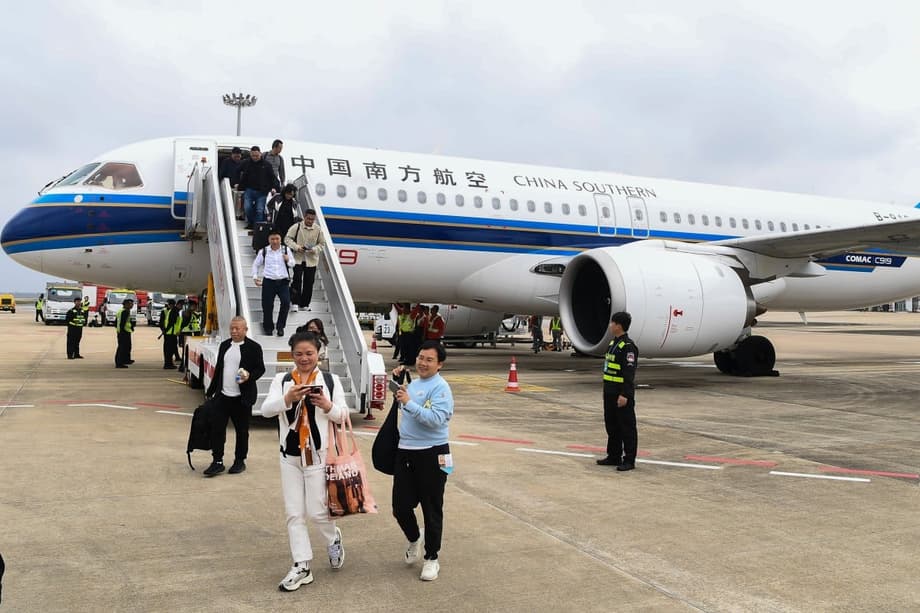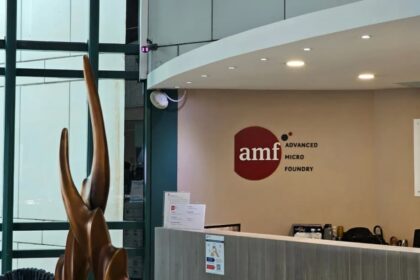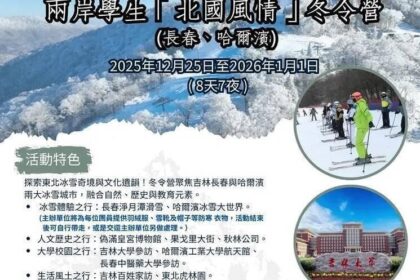Why full planes are not delivering profits
China’s domestic skies are busy again. Planes are full, and passenger traffic has moved past pre pandemic levels. An industry report from planemaker Embraer says the government’s target of 1.5 billion annual air travelers by 2035 is within reach. Yet profit has not followed volume. Large carriers are still reporting losses or very slim margins, and fare cuts remain common to keep seats filled.
- Why full planes are not delivering profits
- How high speed rail changed travel choices
- Crowded trunk routes and low fares
- The fleet mix problem and the case for right sized jets
- How airlines and airports are responding
- Where aviation still wins
- Policy choices and smarter scheduling
- Money matters: what earnings reveal
- Highlights
The reason is a mix of fierce competition on the busiest city pairs and the pull of the world’s largest high speed rail network. Airlines cluster capacity on a limited number of trunk routes, often with three, four or more competitors flying the same corridor. Embraer estimates that more than 65 percent of domestic flights and roughly three quarters of available seat kilometers (ASK, a standard measure of airline capacity equal to seats multiplied by distance flown) are concentrated on these high density routes. That has created frequency battles, price pressure, and diminishing returns even when load factors look solid.
Pressure is rising from the ground as well. China continues to extend its high speed rail grid, linking major cities with fast, frequent trains that depart from downtown stations. For many travelers, especially on medium distance trips, rail delivers a predictable city center to city center journey with ample frequency and an experience that allows phone use and work throughout the trip. Airlines are being pushed to rethink not only pricing, but network design, fleet choice, and service quality.
How high speed rail changed travel choices
Academic studies tracking the rollout of high speed rail between 2001 and 2014 found a clear substitution effect on domestic air travel. After the launch of new lines, domestic air passengers on affected routes fell by around 28 percent, with flights and seats reduced by roughly one quarter. The effect was strongest between 500 and 800 kilometers, where a bullet train can complete the trip in four to five hours. On some headline routes, the drop in air demand was far steeper, about 45 percent after Wuhan to Guangzhou opened and around 34 percent after Beijing to Shanghai connected by high speed rail.
Competition has a time dimension as well as a distance dimension. Researchers who compared daily schedules across both modes identified peak head to head windows. From about 7 am to 9 am, trains and flights chase the same morning demand, which heightens competition for premium passengers on business days. The analysis also sorted city pairs into markets with single mode dominance, full competition, partial competition, or complementary coordination. Beijing to Shanghai sits in full competition, alongside pairs such as Guangzhou to Shanghai and Shanghai to Xi’an, where both modes run dozens of departures every day.
These patterns matter because they reshape how travelers decide. A passenger leaving central Shanghai for a meeting in Beijing may prefer a train that departs every few minutes from Hongqiao station and arrives in the capital’s urban core. Air can still be faster gate to gate on certain days, but traffic, security queues, and airport transfers slow the door to door journey. This calculus has tilted medium distance city pairs toward rail, and airlines have responded with lower fares, more off peak flights, and upgrades to the onboard experience.
Crowded trunk routes and low fares
Route concentration magnifies the strain. Industry data show that 65 percent of capacity sits in markets with more than 800 one way passengers per day. More than half of all domestic routes now face competition from five or more airlines, a share that far exceeds North America or Europe. On such corridors, carriers add frequencies to protect market share, even when new flights barely cover trip costs. Airlines call this a frequency war. It keeps rivals in check, but it erodes yields.
Pricing reflects that intensity. Average domestic fares during the summer peak were about 788 yuan per ticket, down year on year and more than ten percent below 2019 levels. Economy class fares fell nearly 13 percent from 2023 and declined a further 5.7 percent in the first nine months of this year. Discounts fill seats, but they thin margins. The passenger mix has also shifted toward leisure travelers, who are more price sensitive and more willing to travel at off peak times.
ASK growth has outpaced demand in many city pairs. An airline can boost ASK by adding bigger aircraft or more flights. Both tactics lift capacity quickly. If demand does not match that growth, average fares drop. Several major carriers have reported first half losses for 2025 despite load factors that look healthy. In normal times, a strong summer can offset weak shoulder seasons. This year, the lift from vacation travel carried airlines to a rare quarterly profit, but low fares returned as schools reopened and business travel failed to rebound to past levels.
The fleet mix problem and the case for right sized jets
Fleet composition is a core constraint. More than 80 percent of China’s narrowbody jets are set up for high capacity short to medium haul operations. That suits trunk routes but makes it hard to serve thinner markets profitably. A 180 seat jet flying a city pair with modest demand will either depart with many empty seats or will require fares that are too low to break even. The result is a cycle of clustering on big routes while secondary markets remain under served.
The Embraer study argues that sustainable profits depend on diversifying into what airline planners call blue ocean markets. These are underserved Tier 2, Tier 3, and Tier 4 city pairs, routes without high speed rail service, domestic links where rail journey time exceeds four and a half hours, short range international connections, and secondary point to point markets that support a monopoly or duopoly. The report identifies hundreds of city pairs that fit this profile, including about 185 domestic pairs with no high speed rail that could support at least three weekly flights.
Right sizing matters. Smaller narrowbody aircraft in the 100 to 140 seat range can match capacity to demand and allow airlines to maintain frequency without selling most seats at a discount. Airports such as Huizhou, Dalian, and Quanzhou show large numbers of unserved or under served routes. Carriers that redeploy a slice of capacity away from saturated hubs to these markets can rebuild pricing power while still feeding their main networks.
How airlines and airports are responding
Competition has improved service quality in some areas. Research that examined dozens of Beijing departures found that when high speed rail entered a market, airline on time performance improved. Delays fell on affected routes, helped by quicker turnarounds controlled by airlines and shorter taxi in times at destination airports. That is a sign that carriers and airports respond to pressure by tightening operations.
Airlines are also trying to make the cabin more productive. China Eastern introduced free basic Wi Fi across its widebody fleet on domestic routes, with rivals Air China and China Southern offering the service on parts of their networks. The goal is to win back business travelers who now do email, calls, and video meetings on trains. A China Eastern representative framed the pitch in simple terms.
Speaking about customer feedback from the trial, a company representative said the service aims to let passengers stay productive in the air.
We’ve had ‘work from home’, and now a lot of business travelers are changing the phrase to ‘work from the air’.
Airports are adjusting processes to close the convenience gap with trains. Shanghai Hongqiao, which links a busy domestic terminal with a major rail station, has shortened the check in cut off for passengers without checked bags to 30 minutes before departure. Spring Airlines at Terminal 1 now allows close in check in at 25 minutes even with baggage. The airport also dropped a second security screen at the terminal entrance, keeping only explosives checks, which has sped up passenger flow at peaks. For many travelers who arrive by train and walk across the corridor to the terminal, the train to plane transfer now takes under an hour.
Where aviation still wins
Air travel retains clear advantages on longer distances and across remote geographies. For trips above about 800 to 1000 kilometers, a nonstop flight is usually faster door to door even with airport access time. Air also connects regions that rail cannot yet reach at high speed, including parts of the far west, mountainous provinces, island destinations such as Hainan, and many cross border routes. Frequency late at night and early in the morning also favors air on some business days, since trains often run on daytime schedules.
These strengths point toward a more balanced network. Airlines can keep large jets on core long haul domestic routes and international services while using right sized jets to fill holes in the map. Coordinated scheduling and through tickets that combine train segments with flights can extend the reach of both modes without burning capacity on duplicate services.
Policy choices and smarter scheduling
Better scheduling can ease direct clashes and improve use of scarce airport slots. The spatiotemporal method proposed by researchers, which classifies city pairs by the similarity of train and flight schedules, gives planners a way to identify pinch points and coordinate time windows. On city pairs where both modes saturate the 7 to 9 am window, slot managers could encourage a small shift either side of the peak. That can reduce head to head fights for the same passengers and raise average load per departure.
Price dynamics also merit attention. A study of the Beijing to Shanghai market found that price dispersion widened after the launch of high speed rail, as airlines offered larger discounts to price elastic travelers while keeping higher fares for price inelastic flyers. After a safety incident on the rail network, that dispersion narrowed as airfare strategies changed. The lesson is that competition over the fare curve is fluid. Transparent advance purchase rules and an end to excessive schedule churn would improve the shopping experience for travelers while giving carriers better yield management signals.
Policy can also support integration without forcing duplication. Shared booking tools for intermodal trips, baggage transfer services between the station and the terminal at integrated hubs, and coordinated disruption handling would make mixed train plane itineraries viable. That supports mobility without locking either mode into money losing fights on every trunk route.
Money matters: what earnings reveal
Financial results tell the story in numbers. The largest state owned airlines have narrowed losses in the first half of 2025, but they have not yet returned to steady profit. Air China reported a net loss of about 1.8 billion yuan for the first six months. China Southern posted a loss of around 1.5 billion yuan. China Eastern guided to a first half deficit of roughly 1.2 to 1.6 billion yuan. Domestic capacity has moved ahead of pre pandemic levels while international capacity remains below 2019 on key long haul lanes, especially to North America. That reduces access to high yield traffic that once balanced domestic price pressure.
Seasonal peaks still provide relief. During the most recent summer, the big three reported a rare collective quarterly profit as leisure travel surged. After the National Day holidays, the market slipped back into a low season pattern. Average domestic fares fell into the high seven hundreds in yuan, and frequency trimmed back. Analysts expect progress, but they also caution that over supply on short routes, slow business travel recovery, and the pull of rail will keep yields under strain until networks are rebalanced.
That rebalancing hinges on three levers. First, put the right gauge of aircraft on the right market to rebuild pricing power. Second, add service in secondary and tertiary markets where rail is absent or slow and where airports still have room to grow. Third, continue to raise service quality with faster processes on the ground and better productivity tools in the cabin. Carriers that move first will capture loyal customers and return those full flights to profit.
Highlights
- Passenger traffic in China has surpassed pre pandemic levels, yet profit remains weak due to route crowding and fare pressure.
- High speed rail creates strong substitution on 500 to 800 kilometer routes, cutting air passengers and flights by roughly one quarter after new lines open.
- Peak competition between 7 am and 9 am intensifies head to head battles on city pairs such as Beijing to Shanghai.
- About 65 percent of domestic flights and nearly three quarters of ASK are concentrated on high density trunk routes.
- Average domestic airfares in the peak season were around 788 yuan, more than ten percent below 2019 levels.
- Fleet mix skews to large narrowbody jets, leaving many secondary markets under served and pushing airlines into frequency wars on trunk routes.
- Embraer identifies hundreds of underserved city pairs, including many without high speed rail, that could support regular service with right sized jets.
- Service upgrades are under way, from free basic Wi Fi on major carriers to shorter check in cut offs at Shanghai Hongqiao for faster train to plane transfers.
- Airlines still win on long distance trips, remote geographies, and late night or early morning schedules where trains are sparse.
- First half 2025 results show narrowed losses at the big three, but sustained profit will depend on network rebalancing, pricing discipline, and service quality gains.












